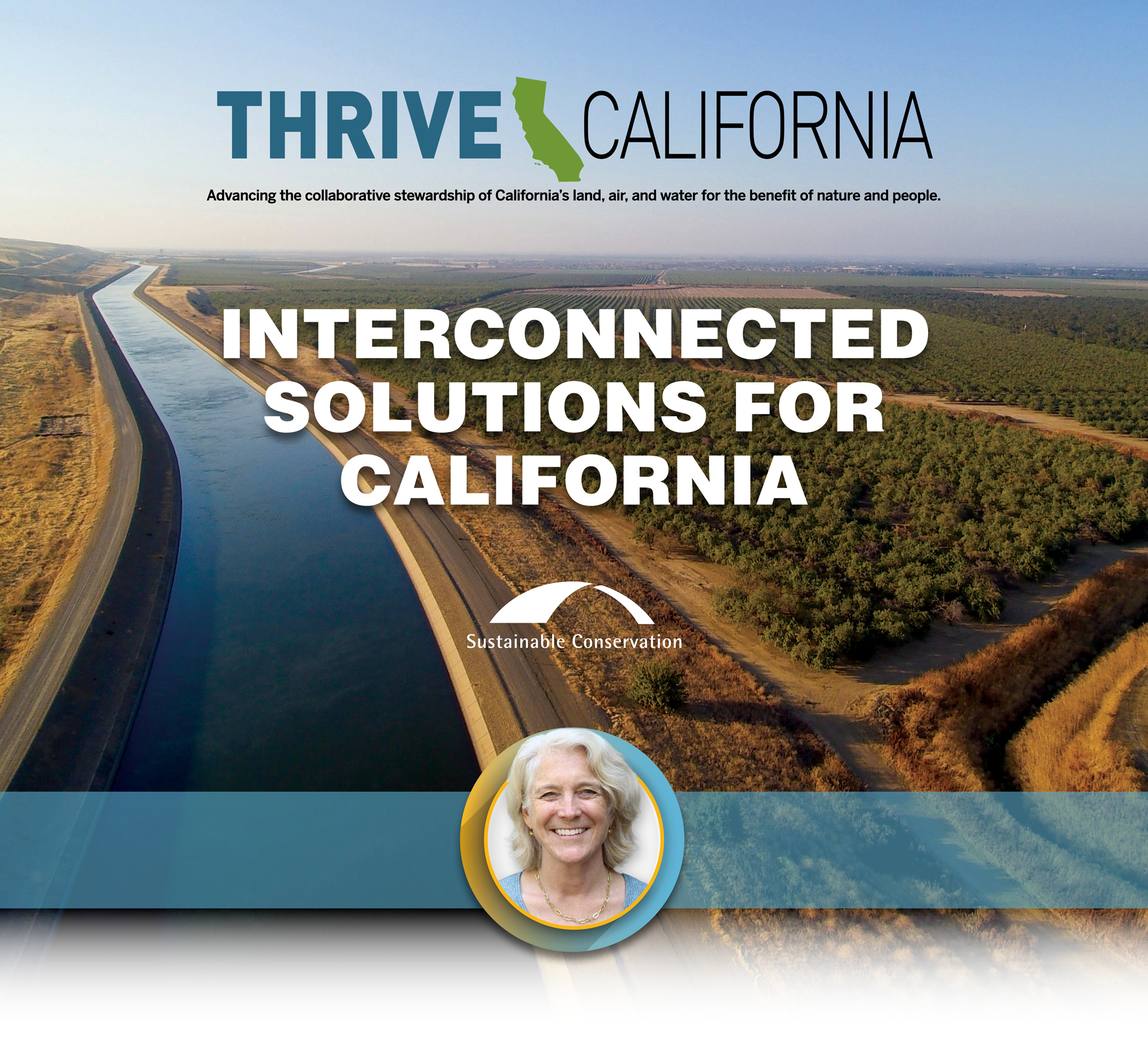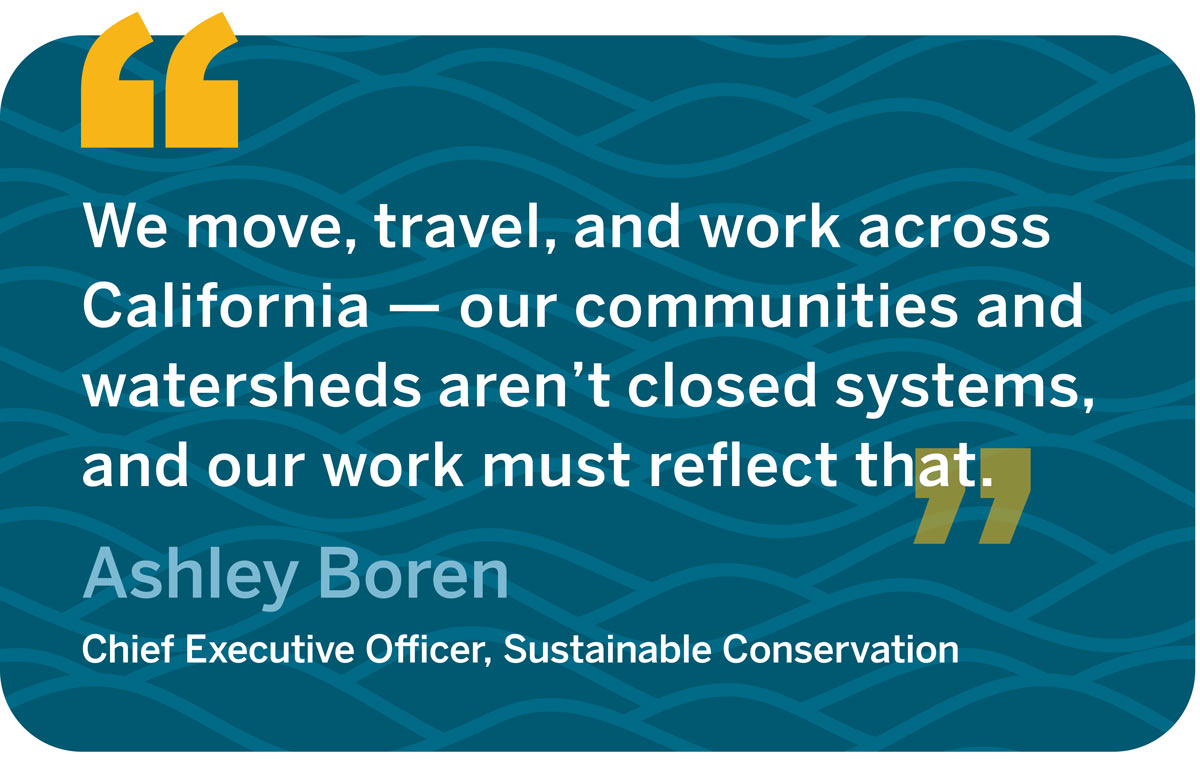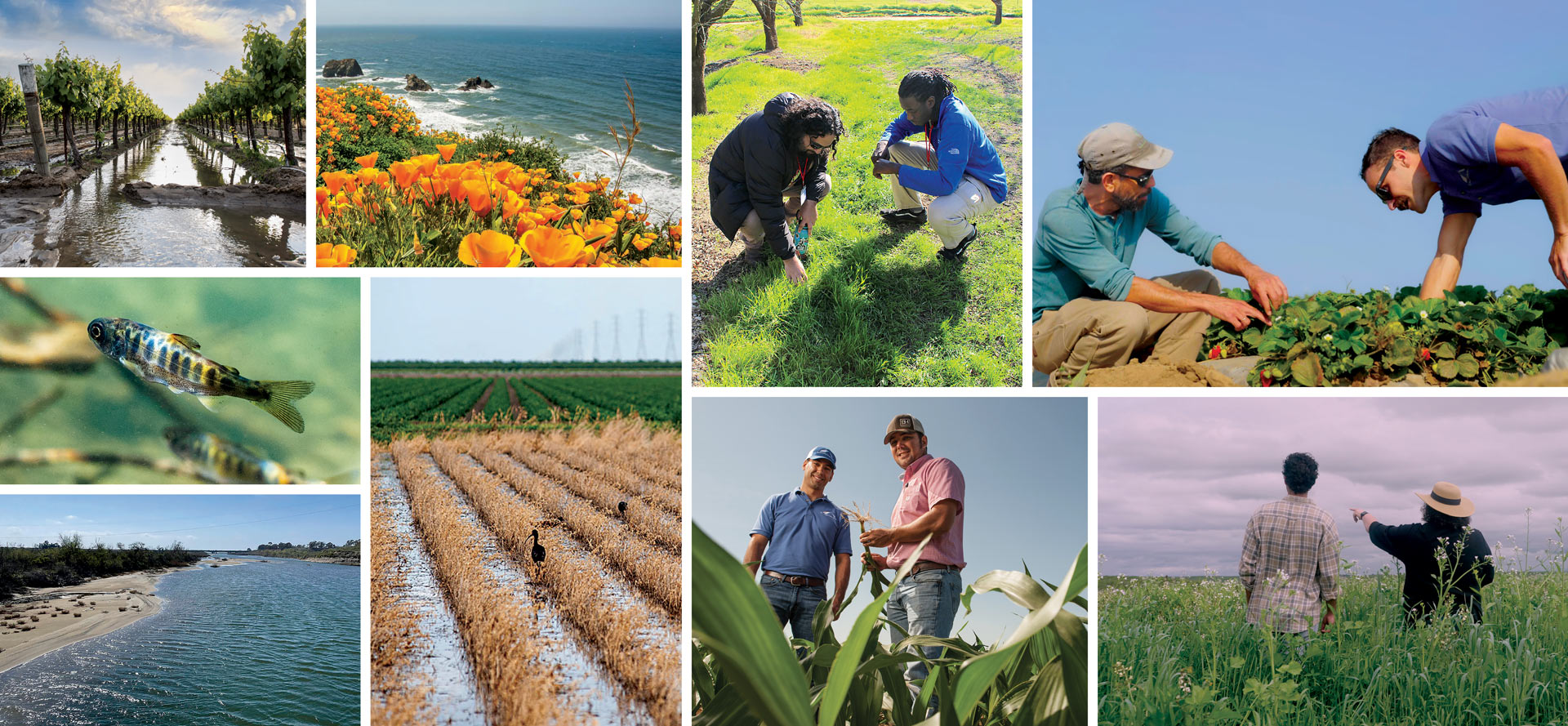

This is a year of big change at Sustainable Conservation. After 28 special years, I will be transitioning my role to a new CEO. As hard as this goodbye will be, I’m excited to welcome a new leader who can bring fresh expertise and energy to our work, and I look forward to introducing them to you.
I’m deeply proud of the team we’ve cultivated and the impact we’ve had in advancing practical, lasting solutions for California’s environment and communities. But more than any single achievement, what I value most is how we’ve accomplished this work — by breaking down silos, building trust across industries and regions, and proving that collaboration is the most powerful tool for solving our state’s biggest environmental challenges.

We move, travel, and work across California — our communities and watersheds aren’t closed systems, and our work must reflect that. That’s why, for nearly three decades, we’ve worked across sectors and landscapes to ensure that every drop of water, every acre of land, and every partnership we build creates the greatest possible benefit for our landscapes, ecosystems, and communities.
On the back of this newsletter, you’ll find a map that brings this vision to life — a snapshot of the projects we’re advancing across the state, all of them reinforcing one another in pursuit of a more resilient future. Each project on that map represents a collective commitment to make lasting environmental change.
I hope you’re as inspired as I am by everything we’re achieving together, and the bigger, more comprehensive solutions to come. As I prepare to pass the baton to the next leader of Sustainable Conservation, I do so wªith deep gratitude for this community and unwavering confidence in the momentum we’ve built together.
Best,

Ashley Boren

Whole-Watershed Solutions
Upstream Watershed Modeling
We teamed up with the Department of Water Resources on a major San Joaquin River watershed-wide analysis of the potential for strategic recharge and reservoir operations to improve climate resilience. This study will help show when, where, and how much water could be used for recharge to support adaptive and informed water management.
 San Joaquin River Watershed Studies
San Joaquin River Watershed Studies
Ecosystem Restoration Across Watersheds
Restoring habitat at the watershed level reconnects habitat, improves water quality, and boosts ecosystem resilience amid climate change. Our expedited permits strive to put restoration on a more efficient regulatory path, saving restorationists time and resources.
 Lower Sugar Creek Beaver Dam Analogue
Lower Sugar Creek Beaver Dam Analogue
 Ten Mile River Habitat Enhancement
Ten Mile River Habitat Enhancement
 Lagunitas Creek Habitat Enhancement
Lagunitas Creek Habitat Enhancement
 Ormond Beach Restoration
Ormond Beach Restoration
 Santa Margarita River Restoration
Santa Margarita River Restoration
Building Healthy Soils
Healthy soil retains more water, reduces runoff, and boosts resilience to both drought and floods — making it a vital lever for protecting California’s water resources. Our recent work helps local water managers and growers understand how cover crops can contribute to groundwater balance in water-scarce environments.
 Nitrate Scavenging Research with Dr. Joji Muramoto
Nitrate Scavenging Research with Dr. Joji Muramoto
 Cover Crop Water Accounting
Cover Crop Water Accounting
Valley Water Security
The Central Valley is where California uses and impacts most of our water. Sustainable Conservation works with the people who drink, manage, and irrigate with groundwater to implement on-farm recharge and build sustainable groundwater security.
 On-Farm Recharge Pilot on Pistachio Orchard
On-Farm Recharge Pilot on Pistachio Orchard
 Fairmead Groundwater Resilience Project
Fairmead Groundwater Resilience Project
 Terranova Ranch Groundwater Recharge
Terranova Ranch Groundwater Recharge
Water Quality and Nutrient Management
We protect Central Valley groundwater by curbing nitrogen overapplication — California’s top human-caused groundwater pollutant. Through our MSDI irrigation system and whole orchard recycling, we’re expanding nutrient reuse frameworks across more crop types and acreage, reducing reliance on imported fertilizers while maintaining the safety of our food and water supplies.
 De Jager Farms Almond MSDI Trial
De Jager Farms Almond MSDI Trial
 Whole Orchard Recycling
Whole Orchard Recycling
 Manure Subsurface Drip Irrigation System on Dairy
Manure Subsurface Drip Irrigation System on Dairy